Boojho made the circuit given in Fig. 14.3 and observed that the bulb did not glow. On Paheli’s suggestion he added one more cell in the circuit. The bulb now glows. Explain.
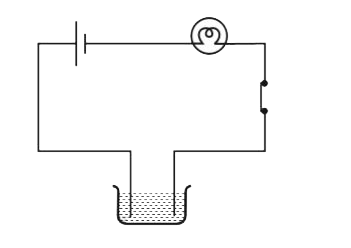
As soon as Boojho added another cell the circuit received necessary electricity to glow the bulb.
Topper's Solved these Questions
Similar Questions
Will the bulb glow in the circuit shown in Fig. 12.6? Explain.
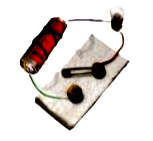 View Solution
View SolutionPaheli set up an experiment using liquid A in the beaker as shown in Fig. 14.4. She observed that the bulb glows. Then she replaced the liquid A by another liquid B. This time the bulb did not glow. Boojho suggested replacing the bulb by an LED. They observed that the LED glows. Explain.
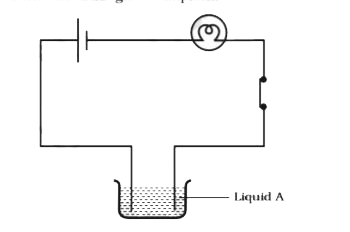 View Solution
View Solution
Knowledge Check
- Question 1 - Select One
In the circuit in Fig. 7.27, bulb B does not glow although ammeter A indicates that the current is flowing . Why does the bulb not glow?
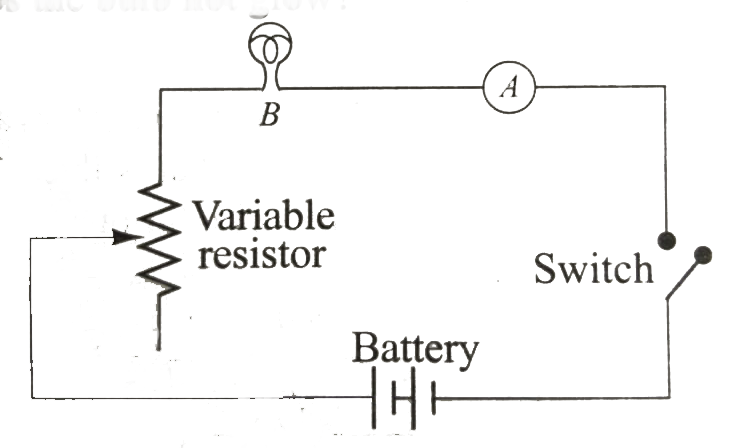 AThe bulb is fused .BtThere is a break in the circuit between bulb and ammeter.CThe variable resistor has too large resistance.DThere is a break in the circuit between the bulb and the variable resistance.
AThe bulb is fused .BtThere is a break in the circuit between bulb and ammeter.CThe variable resistor has too large resistance.DThere is a break in the circuit between the bulb and the variable resistance. - Question 2 - Select One
Rajesh has two bulbs connected across two cells in a simple circuit. How can he make the bulbs glow dimmer?
AReplace one cell with a piece of chalkBReplace one cell with a piece of wireCReplace one bulb with a piece of wireDReplace one bulb with another cell
Boojho made the circuit shown in Fig. 14.10. He wanted to observe what happens when an electric current is passed through water. But he forgot to add a few drops of lemon juice to water. Will it make any difference to his observations? Explain.
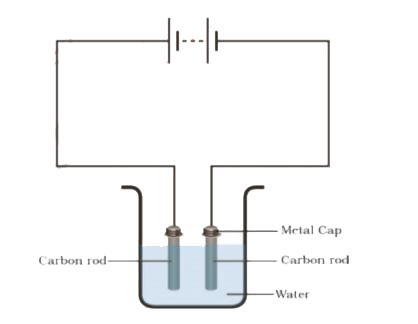 View Solution
View SolutionWould the bulb glow in the circuit shown in Fig. 12.15?
 View Solution
View SolutionIn the circuit given as Fig. 14.7, Boojho observed that copper is deposited on the electrode connected to the negative terminal of the battery. Paheli tried to repeat the same experiment. But she could find only one copper plate. Therefore she took a carbon rod as negative electrode. Will copper be still deposited on the carbon rod? Explain your answer.
 View Solution
View SolutionObserving that the bulb does not glow in the circuit shown in Fig. 14.11 A, Boojho changed the circuit as shown in Fig 14.11 B. He observed deflection in the magnetic compass.

(i) What does the deflection in magnetic compass indicate?
(ii) Why did the bulb not glow in Fig.14.11 A?
(iii) What would be the effect of increase in the number of turns in the coil wound around the magnetic compass in Fig. 14.11B?
(iv) What will be observed if the number of cells are increased in the circuit shown in Fig. 14.11B?View SolutionObserve the circuit given in Fig. 14.8.
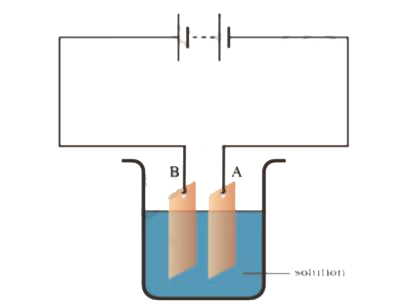
Boojho set up this circuit for purification of copper. What will be the nature of – (i) plate A (ii) plate B (iii) the solution.
Explain the process of purification.View SolutionPaheli took a wire of length 10 cm. Boojho took a wire of 5 cm of the same material and thickness. Both of them connected the wires as shown in the circuit given in Figure 14.4. The current flowing in both the circuits is the same.
(i) Will the heat produced in both the cases be equal? Explain.
(ii) Will the heat produced be the same if the wires taken by them are of equal lengths but of different thickness? Explain.
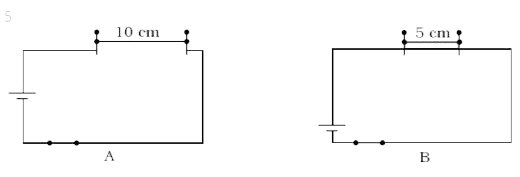 View Solution
View Solution

